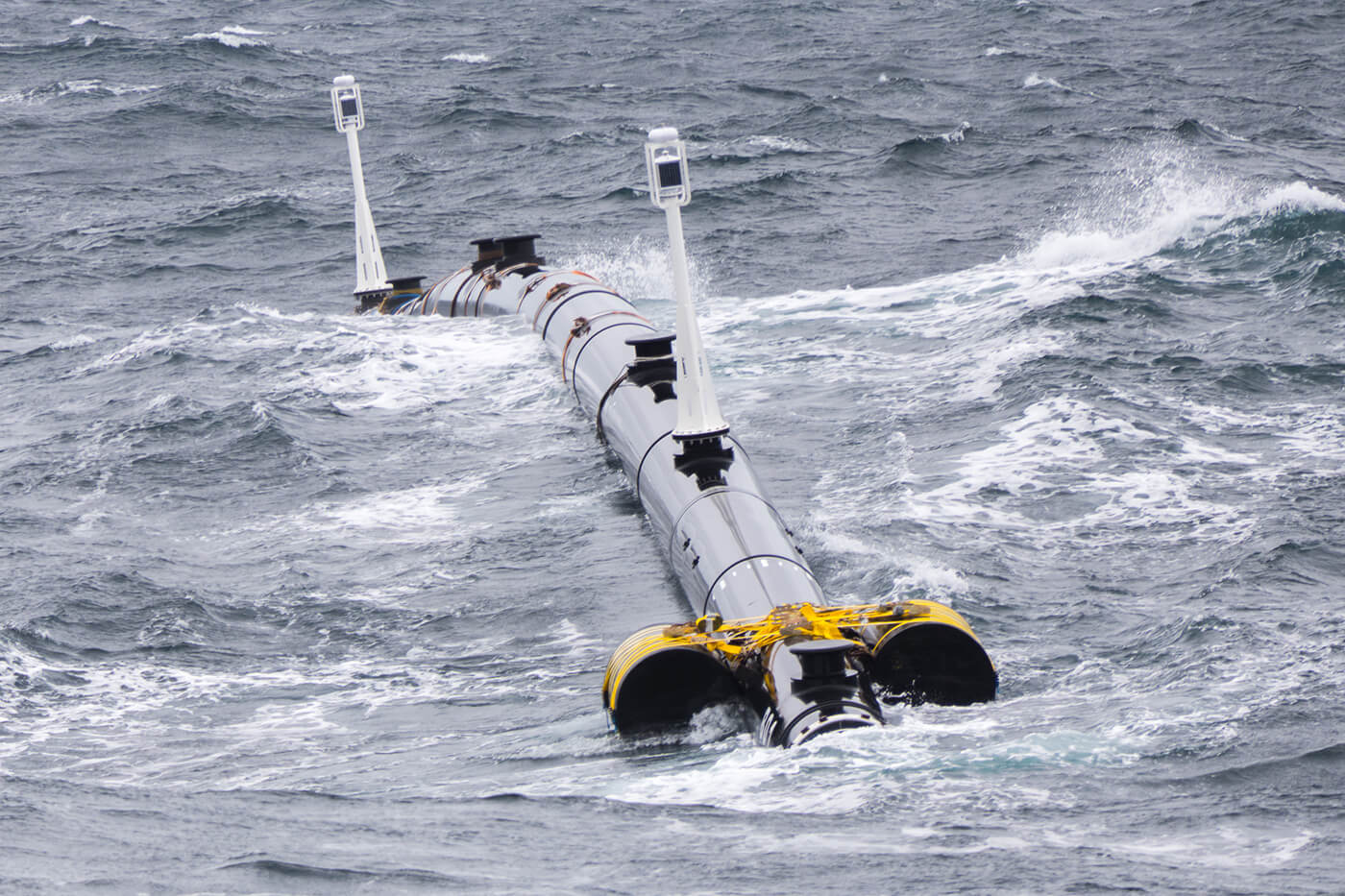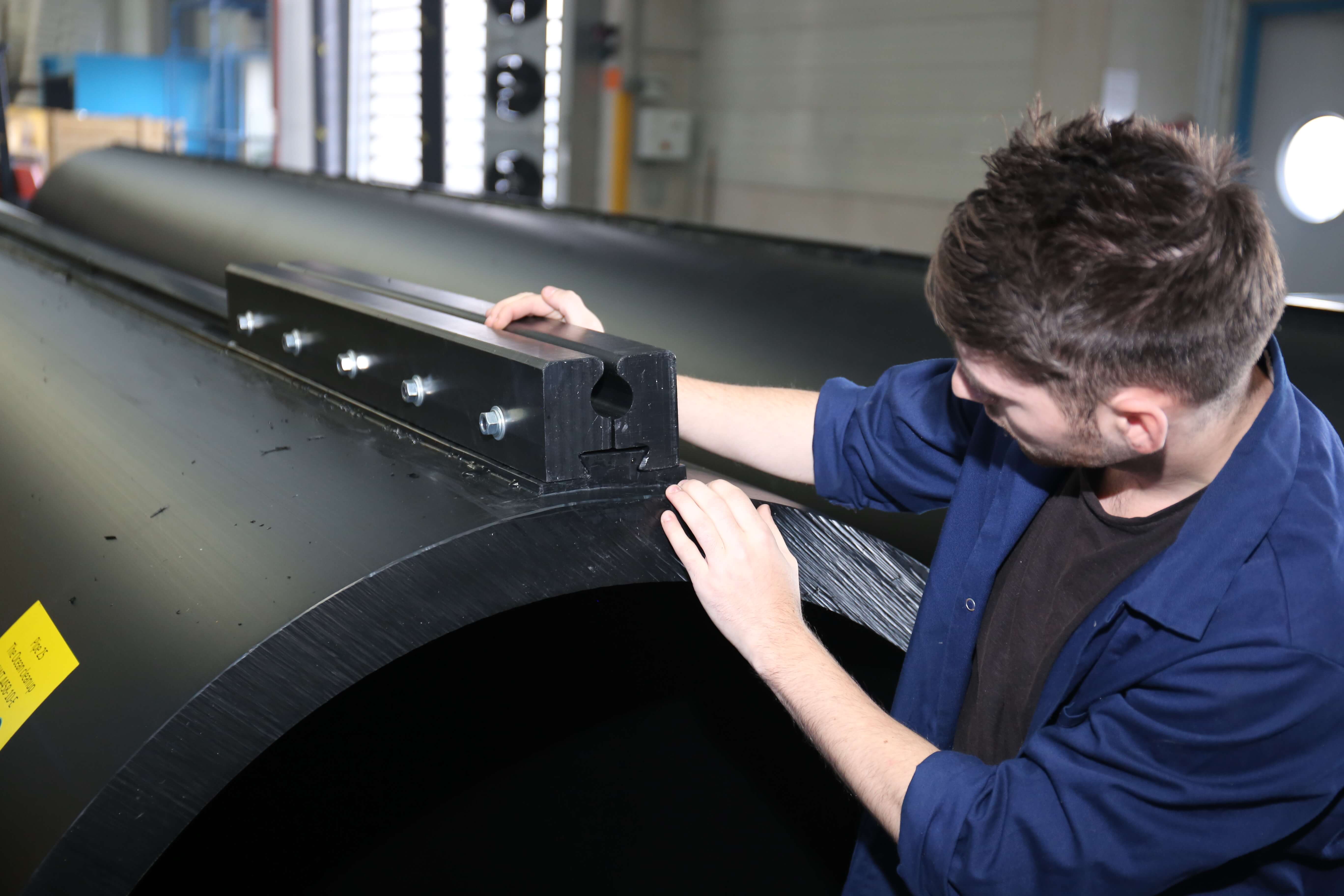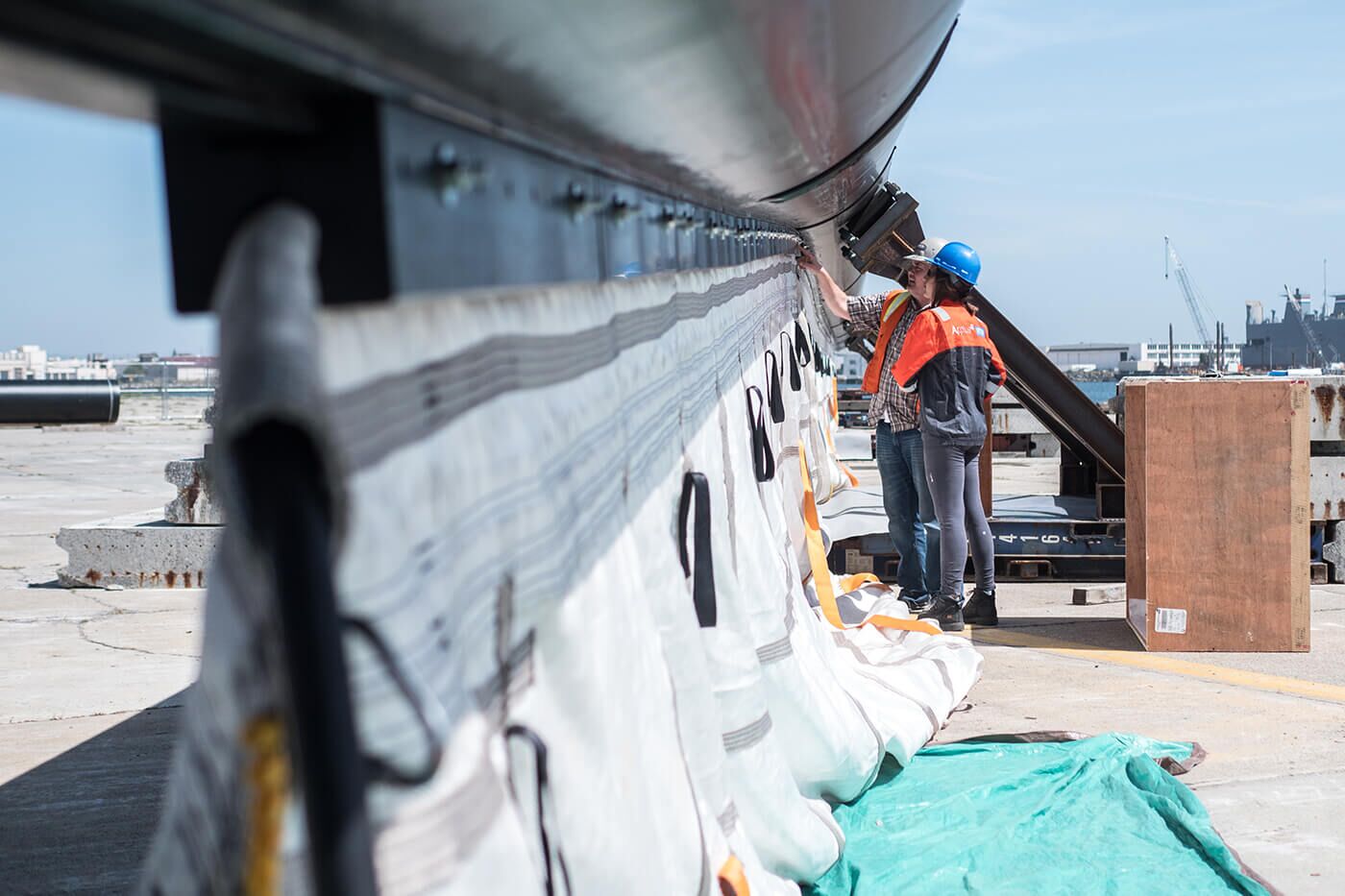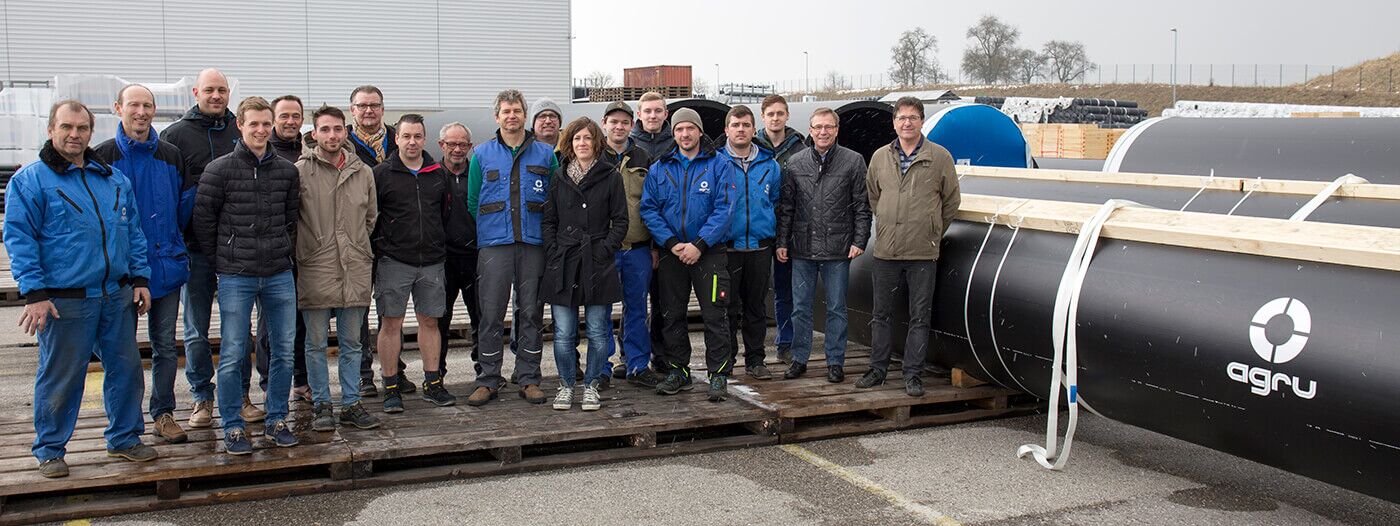GEORGETOWN, SOUTH CAROLINA – September 8, 2018. Plastic garbage has been entering our oceans for decades, contributing to the creation of five gigantic oceanic garbage patches. On September 8, 2018, The Ocean Cleanup, an organization committed to developing technologies to rid the oceans of plastic, launched an unprecedented clean-up operation. The organization has put in place the world’s first system to combat maritime plastic waste approximately 1,200 nautical miles west of the Californian coast in the Great Pacific Garbage Patch. The AGRU XXL piping system is the backbone of this 2,000-foot-long floating construction, which will form an artificial coastline in the ocean where plastic waste is intended to accumulate.
The ocean plastic problem is significant, with about 8 million metric tons of plastic waste entering our oceans every year. Due to their specific densities, some types of plastic can float near the surface for many years before the effect of UV light and wave impact breaks them down into microplastics. When brought together, they create formations known as “garbage patches” or “trash vortices.” At this phase, the microplastics are difficult to remove from the water and can be ingested by marine life, including the fish that humans consume.
Solving a legacy problem of plastic floating in the ocean
Garbage patches occur where different oceanic currents converge to form enormous vortices. In total, there are five of these major vortices (known as gyres) in the world’s oceans, the largest of which is in the North Pacific. Plastic that has made its way into the world’s oceans over the last 50 years has settled in these concentration zones. Recognizing an opportunity to solve the problem using these currents, The Ocean Cleanup developed an ingenious idea to clean the garbage patches with a fleet of autonomous waste collection systems. By harnessing the power of the ocean currents to their advantage, the Dutch startup founded by entrepreneur Boyan Slat, can deploy a sophisticated solution to retrieve and recycle 90% of the plastic from the Pacific Garbage Patch by 2040. The solution? A fleet of massive floating screens that move ahead of the plastic waste. The screens form a large U-shape that concentrates the waste in the middle, where it can be extracted and returned to land for recycling by dedicated vessels every 6–8 weeks.
AGRU XXL piping system is the backbone of the Ocean Cleanup System
According to the latest findings, the Great Pacific Garbage Patch between California and Hawaii is as large as Mexico and contains 1.8 trillion pieces of plastic. The Ocean Cleanup has now assembled the first technical system to start the “largest cleanup in history.” The system’s backbone is a 2,000-foot-long “floater” pipe made of fully pressure-resistant PE 100-RC XXL pipes, developed by AGRU together with The Ocean Cleanup and custom manufactured by AGRU. Although no internal pressure is created in this application, the external stresses caused by the waves, UV radiation, storms and aggressive salt water are enormous, and would push any other material beyond its limits. The floater has been designed to allow for load cases that are expected only once every hundred years in the open ocean. The system’s flexibility is the key to its ability to survive through storms in one of the most rugged areas on the planet. And polyethylene has enormous flexibility. Thanks to the special properties of the RC material used by AGRU, the floater possesses long-term protection against the formation and spread of cracks. In order to ensure maximum buoyancy even in the event of damage, the floater needs to be split into a number of hollow compartments like a ship (known as bulkheads). AGRU produced bulkhead partition walls to form these airtight compartments, and took care of welding them into the pipes with the highest degree of precision.
Floating high-tech screen
Another key feature of the system is a 10 foot-deep “skirt” attached below the floater. Together with the floater, the skirt forms an artificial coastline in the ocean. The floater provides buoyancy to the whole system and prevents plastic from floating over it. The skirt below the surface prevents smaller particles from escaping underneath. The Ocean Cleanup designed a special rail system to secure the skirt to the floater, which AGRU has implemented with supreme accuracy and subject-matter expertise. For this dove tail joint, PE 100-RC sheets were machined with millimeter precision and inseparably fixed to the floater using a welding machine specially developed for this purpose. AGRU also supplied ballast pontoons made of PE 100-RC pipes to stabilize the floater. The complete system was prepared for use under the guidance of AGRU experts in San Francisco.
The Ocean Cleanup system makes use of solar-powered lights, anti-collision systems, cameras, sensors and satellite antennas so the system actively communicates its position at all times. The Plastics Experts at AGRU have also supplied custom parts to make this floating high-tech screen operational. At night, for example, position indicator lights must make the system clearly visible to ships and satellite antennas must communicate its location via GPS at all times. The power required for this is generated during the daytime with solar panels. AGRU added the attachment points for the masts of the position indicator lights and the satellite antennas, as well as the bollards for the ships that come to visit the system for inspection or garbage collection. These were made from machined spigot saddles “Topload”.
Ingenious solution harnessing the power of the ocean
The Ocean Cleanup system moves faster than the plastic in the swirling mass of rubbish. To do this, the system takes advantage of the three natural oceanic forces: winds, waves, and currents. Both the plastic and the system are being carried by the currents. However, only the floater system harnesses forces produced by winds and waves. As the floater partly sticks above the surface, and plastic is primarily just beneath it, the system leverages the added forces to move faster than the plastic, allowing the plastic to be captured. The skirt extends deeper in the middle of the system than on its edges. As the current applies pressure on the skirt, the system naturally adopts a U-shape, which enables it to concentrate plastic in the center, like a funnel. The drag generated by the skirt also acts as a stabilizing force, allowing the system to reorient itself when the wind changes direction. And because the system like the plastic is free floating, it automatically drifts to the areas with the highest plastic concentration.
Every few weeks, a ship will collect the concentrated rubbish and deliver it to a waste-carrying mother ship. The larger ship will then bring the plastic ashore for recycling. If the first Ocean Cleanup system is successful, a full fleet of 60 floating screens will be launched over time in the Great Pacific Garbage Patch. The amount of plastic waste present in this vortex of refuse would then be halved every five years, removing 90% of the plastic waste from the Pacific Garbage Patch by 2040.








About AGRU America, Inc.
Since 1988, Georgetown, SC–based AGRU America, Inc. has been the world’s leading manufacturer of flat die extrusion geomembranes, geonets, geocomposites, geotextiles, geosynthetic clay liners, concrete protective liners and fittings. The company also supplies vertical barrier systems and large diameter piping systems for the U.S. and international markets. AGRU America’s state-of-the-art products include AGRU Smooth Liner® / MicroSpike® (structured textured products), Super Gripnet®, and Drain Liner® in both LLDPE and HDPE. AGRU America is part of Alois Gruber GmbH, an Austrian family-owned business since 1948 with production facilities in Austria, the U.S., Germany, China, and distribution in over 80 countries worldwide. The company’s website can be found at www.agruamerica.com.